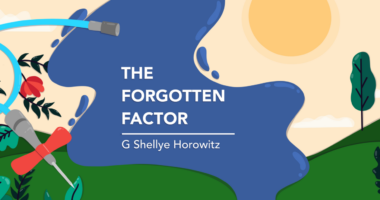Men with mild hemophilia struggle to access care, too
Chatting with men about their challenges with their milder blood disorders

When I worked for the Hemophilia Federation of America (HFA), I was incredibly grateful for its dedication to bringing awareness to the needs of women with hemophilia, many of whom had a mild form of the disorder. As I observed our community events, I realized that a group was largely missing: men with mild hemophilia.
I recently had the opportunity to chat with Thomas Graham and James Setliff via email about their experiences as men with mild hemophilia. They attended a Mild Matters event I coordinated for HFA in Tulsa, Oklahoma, that brought men, women, and parents of children with mild bleeding disorders together for education and support. They refer to this event in some of their comments.

Thomas Graham says he appreciates the connections he’s made in recent years with other men who, like him, have mild hemophilia. (Courtesy of Thomas Graham)
Graham says he was mistakenly diagnosed with von Willebrand disease at the age of 5. At 14, he had his first joint bleed and received a correct diagnosis of mild hemophilia. Setliff, however, wasn’t diagnosed until he was 25. A later diagnosis is often common for people with mild hemophilia.
I asked them if they thought men were missing from community engagement around mild hemophilia.
“I’ve always noticed that most attention was [paid] to guys who were severe, and then over the years women started getting a lot of attention,” Graham said. “I wasn’t really bothered, but I noticed. It was almost like being on the sidelines of a game, but they won’t let you play. It didn’t occur to me until [the event in] Tulsa that I’ve met very few men [with mild hemophilia].”
Setliff had a similar experience. “Early on I did feel forgotten once I was diagnosed. That was in 1979. I didn’t know about a local chapter [of bleeding disorders organizations] or an HTC [hemophilia treatment center] until 2007.”
Challenges for men with mild hemophilia
Challenges exist that are unique to men with mild hemophilia. Graham says he struggles with being taken seriously.
“It seems as though most support group activity — services, presentations, new products, etc. — have historically been aimed at [people with severe hemophilia], and even [those with] moderate [hemophilia]. Women get their own special attention. You never hear anything for or about [men with mild hemophilia],” he said.

James Setliff says care has been slowly improving in recent years for men with mild hemophilia. Self-advocacy can help to continue that trend. (Courtesy of James Setliff)
A severe traumatic event during a bicycle ride was a huge challenge for Setliff. He couldn’t work for three years after that and had seven surgeries to repair all of his broken bones.
Like women with mild hemophilia, men struggle to obtain treatment. A hospital error after knee surgery meant Setliff didn’t receive the factor treatment he needed. He had to have blood aspirated from both knees. (Note: Opinions vary about aspirating joint bleeds.) A knee bleed after a sporting incident was an issue for Graham.
“I left the hospital because a doctor said, ‘You’re mild. It will stop on its own.’ In retrospect, I most likely let several internal bleeds go untreated,” he said. Graham now has joint damage that’s likely the result of internal bleeds he never realized he was having.
“Even a tiny little cancer is still cancer and gets the same attention,” Graham added. “Well, even mild hemophilia is still a bleeding disorder that needs just as much attention.”
Moving forward, Setliff said, medical staff need to be given a more thorough explanation of bleeding disorders and how to treat them. He also believes that hospitals should be open to allowing people with bleeding disorders to bring their own factor for infusion. Currently, many medical facilities don’t stock these products.
Changes are happening
Both men acknowledged that changes have occurred in the past few years. “The mild men I know who get noticed are the ones who speak up, demanding attention,” Graham said. “My last two doctors spent quality time discussing it with me, whereas previous doctors brushed it off because I wasn’t severe.”
Setliff agreed: “The HTC and some pharmaceutical representatives have kept up with me more and have ensured I always have the factor I need when I need it,” he said.
“You matter” is a message Graham wants men with mild hemophilia to know. “I get the most acknowledgement when I just say, ‘I have hemophilia.’ Save ‘mild’ for later in the conversation.” He encourages other men to speak up and share their stories when they meet other men with mild hemophilia.
“Never give up trying to be the best version of yourself, and never take anything for granted,” Setliff said. “With all of the available information, as well as local chapters [of bleeding disorders organizations] and HTCs, no one — especially those with mild hemophilia — should ever lack for support and access to factor.”
Note: Hemophilia News Today is strictly a news and information website about the disease. It does not provide medical advice, diagnosis, or treatment. This content is not intended to be a substitute for professional medical advice, diagnosis, or treatment. Always seek the advice of your physician or another qualified health provider with any questions you may have regarding a medical condition. Never disregard professional medical advice or delay in seeking it because of something you have read on this website. The opinions expressed in this column are not those of Hemophilia News Today or its parent company, Bionews, and are intended to spark discussion about issues pertaining to hemophilia.







Leave a comment
Fill in the required fields to post. Your email address will not be published.